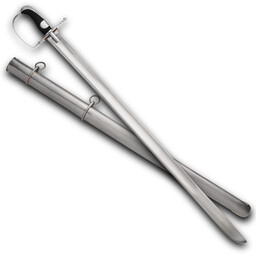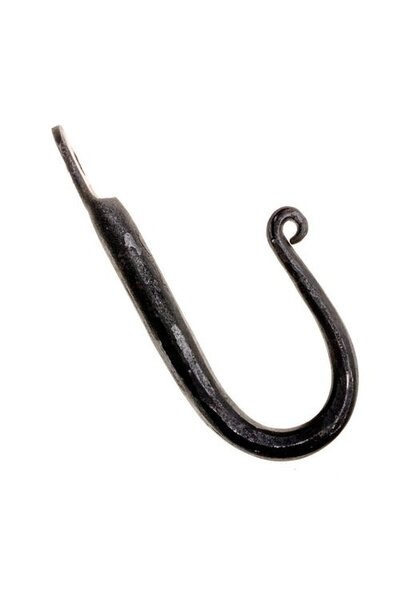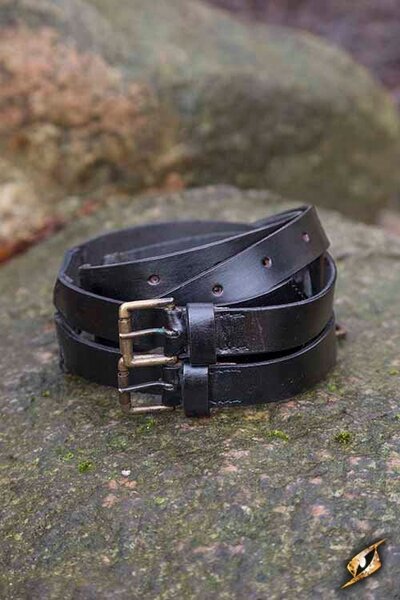Product description
Used by British Lifeguards, Royal Horse Guards, Dragoon Guards and Dragoons through the Revolutionary and Napoleonic Wars. It was directly copied from the Austrian Pallasch 1769 heavy cavalry sword. British cavalry officer John Le Marchant attentively made drawings of the weapons carried by the Austrian cavalry during the Low Countries Campaign in 1793-95, and likely was involved in the recommendation of this pattern to his superiors. Notable for its use at Salamanca and Waterloo.
Technically the 1796 heavy cavalry sword is a backsword, defined as a sword with a straight blade with one cutting edge and a spine (the "back") thickened for most of its length to give added strength. In fact, this is not a delicately maneuverable sword by any stretch of the imagination, and gained favor as a bludgeoning weapon. Troops also used the guard as a knuckle duster.
The blade is forged with a single broad fuller on each side. The grip is of ribbed leather. The basket guard has ears which are riveted through the tang of the blade to give the hilt and blade a very secure connection. The hilt combines a disc guard pierced with 2 semicircular and 6 oval holes, with a single knucklebow and two slim 2-inch-long (51 mm) langets (projections from the guard, which grip the throat of the scabbard) extending from the front of the guard. Arrives sharpened and includes steel scabbard.
Details:
Overall Length: 100,33 cm
Blade length: 88,90 cm
Weight: 1,08 kg
Material: 1065 High Carbon steel
Edge: sharp
Including scabbard
Based on a historical original
Shipment weight (g): 2000 *
We do not sell this product to customers under the age of 18. Click here for more information on the European arms acts.
This item is produced in limited quantities only. This means that every piece is unique. Sizes & finish may vary lightly from piece to piece.
Prevent rust and corrosion by oiling your weapons regularly. Remove rust easily with black sandpaper. Remove burrs with a whetstone. Make sure you have removed all burrs before using a battle-ready weapon, as they can cause wounds.
Maintenance & care
Just as with weaponry, you can care for your shoes and leatherware by applying a little Ballistol after cleaning. This prevents the leather from drying out.
Tip: How to adjust the finish of your armour and weaponry
Luxurious (polished)- polish the steel with metal polish or toothpaste. You can even give the item a mirror-like polish. Test on a small surface first!
Handmade (matte)- soak the steel in cola for 40 minutes to 20 hours. Check regularly and treat with black sandpaper.
Antique (patinated) leave the steel to rust for some time in a damp environment, preferably outside. Remove the red layer of rust, to reveal the corroded top layer.
Please note. After finishing the product yourself, the warranty and return right expire. Celtic WebMerchant is not responsible for the obtained result."
When packaging this item, we exclusively use 100% recycled plastic and recycled paper/cardboard from FSC certified forests. We reuse a large part of the material directly without the intervention of a recycling process.
Recycle the material by separating your waste:
1. Cardboard: separate or reuse your paper.
2. Plastic cushions, clothing bags and plastic tape: separate or reuse your plastic. If possible, pierce the cushions with a volume reduction needle.
3. Paper packaging for jewelry and small items: these have a plastic inner layer. Remove these, then separate your paper and plastic.
Read here about how we are committed to sustainability.












